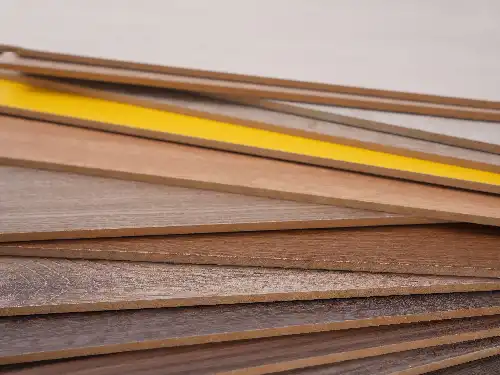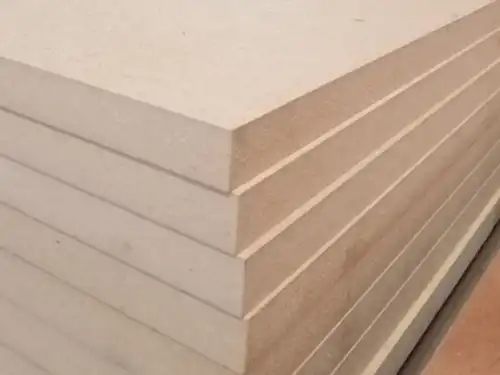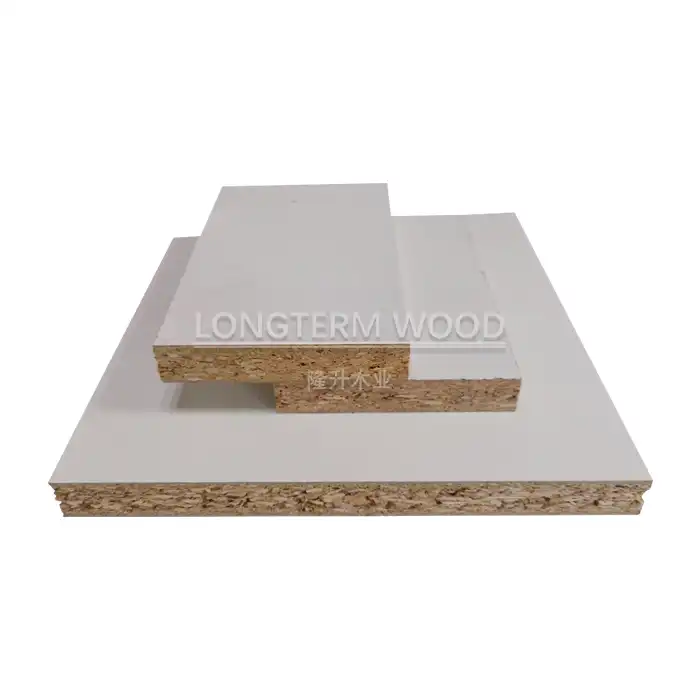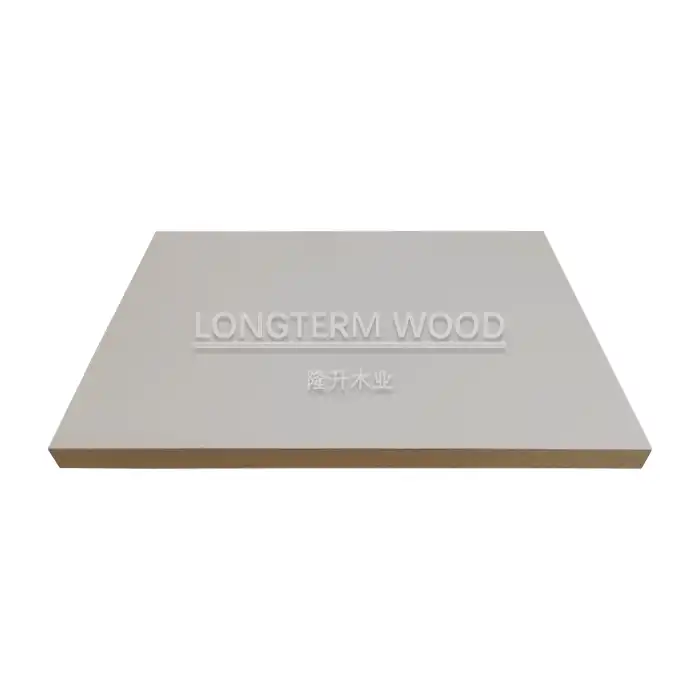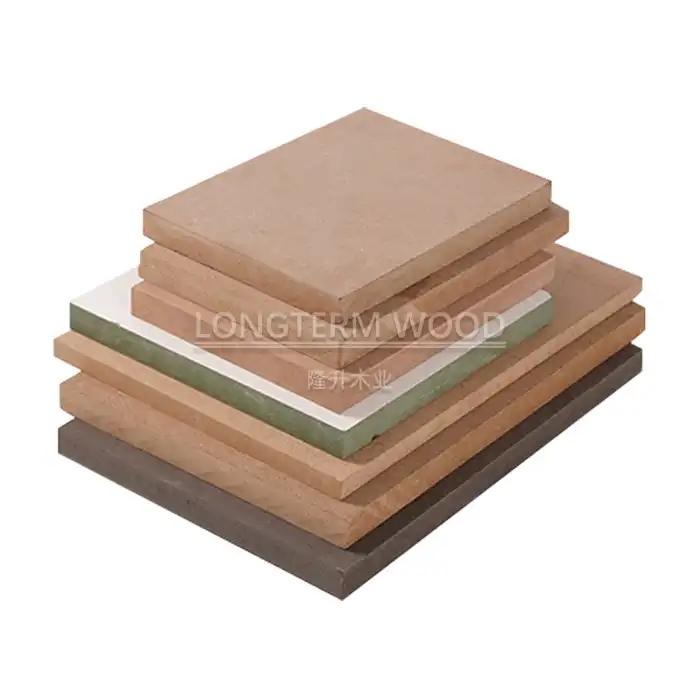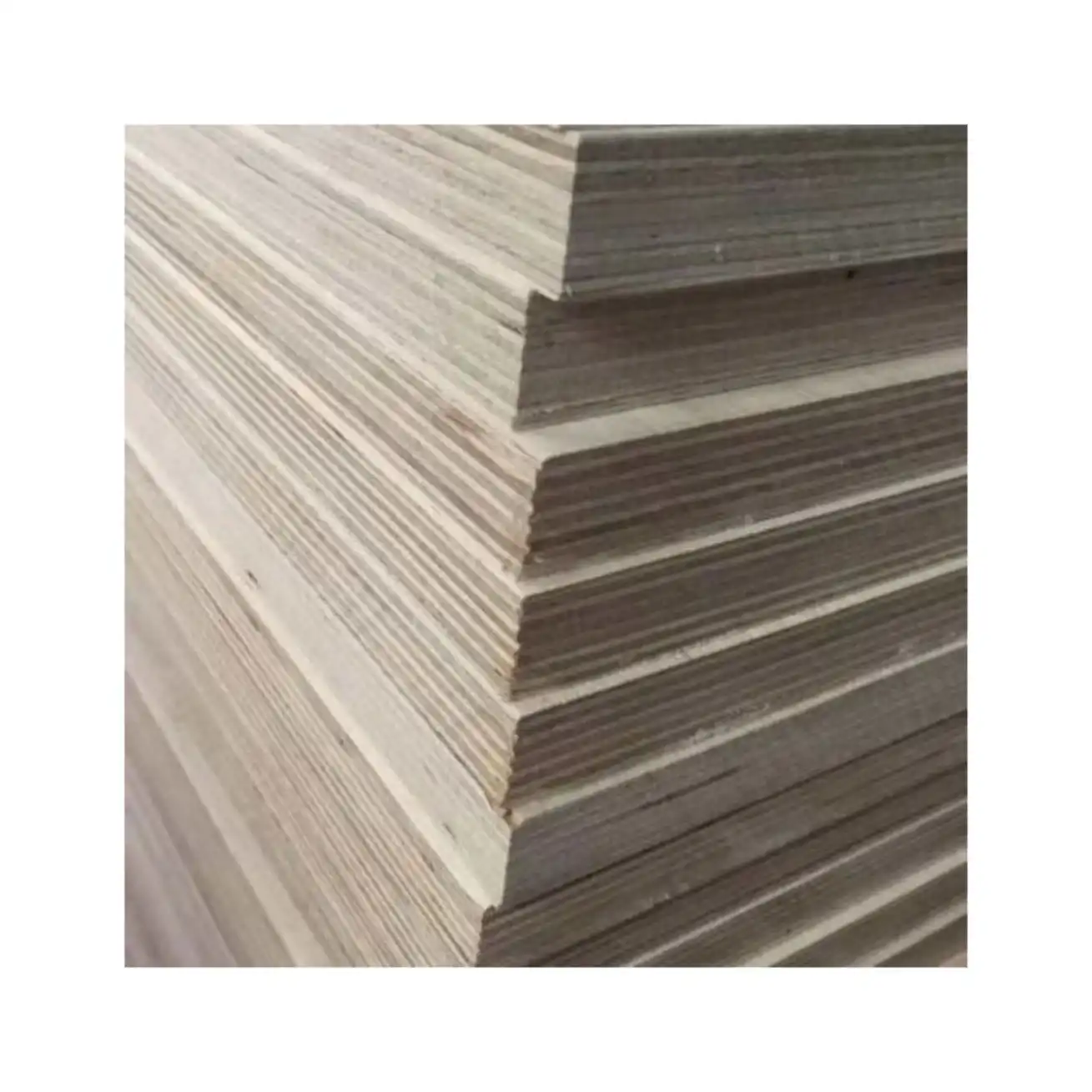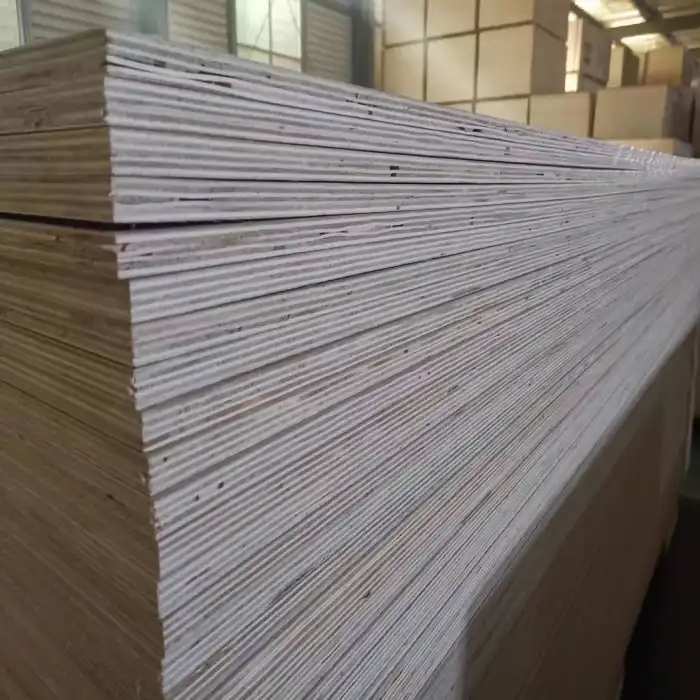
Why Does Melamine Plywood Outperform in Commercial Settings?
2025-05-23
In today's competitive commercial environment, choosing the right building materials can significantly impact both the longevity and aesthetic appeal of your space. Melamine Plywood has emerged as a frontrunner in commercial applications, offering an impressive combination of durability, versatility, and cost-efficiency. This high-performance engineered wood product consists of a plywood core with melamine-impregnated paper thermally fused to both surfaces, creating a material that stands up to the rigorous demands of commercial environments while providing exceptional design flexibility.
Unmatched Durability Makes Melamine Plywood a Commercial Essential
In commercial settings where materials must withstand constant use and maintain their appearance, melamine plywood distinguishes itself with exceptional performance characteristics.
Superior Resistance to Daily Wear and Tear
Melamine Plywood offers remarkable resilience against the challenges of high-traffic commercial environments. The thermally fused melamine surface creates a protective barrier that significantly outperforms traditional wood finishes in resisting scratches, dents, and abrasions. This remarkable durability stems from the manufacturing process where melamine-impregnated papers are bonded to the plywood substrate under intense heat and pressure, creating a surface that's nearly impervious to everyday damage. For busy commercial spaces like retail stores, restaurants, and offices where furniture and fixtures endure constant use, this resilience translates to significantly extended product lifespans and reduced maintenance costs. Facilities managers particularly value Melamine Plywood for its ability to maintain its appearance even after years of service, avoiding the worn-out look that quickly develops with lesser materials. Additionally, the uniform surface reduces dirt accumulation and simplifies cleaning, requiring only mild detergents and soft cloths to maintain its pristine condition.
Exceptional Moisture and Stain Resistance
One of the most compelling advantages of Melamine Plywood in commercial applications is its superior resistance to moisture and stains. The non-porous melamine surface effectively prevents liquids from penetrating the material, making it ideal for environments where spills are common, such as cafeterias, break rooms, and conference spaces. This moisture resistance also makes Melamine Plywood suitable for areas with fluctuating humidity levels or occasional exposure to water, such as reception counters near entrances where rainwater might be tracked in. The stain-resistant properties derive from the same sealed surface that repels liquids, preventing common commercial contaminants like coffee, ink, and food colorings from causing permanent damage. This characteristic proves invaluable in maintaining a professional appearance without requiring specialized cleaning protocols or harsh chemicals. For businesses concerned with hygiene standards, the moisture-resistant surface of Melamine Plywood also inhibits bacterial growth and simplifies sanitation procedures, an increasingly important consideration in post-pandemic commercial design.
Fire and Chemical Resistance for Enhanced Safety
In commercial settings, safety compliance often dictates material selections, making Melamine Plywood's fire-resistant properties particularly valuable. The melamine resin inherently contains fire-retardant components that slow combustion and reduce flame spread rates compared to untreated wood products. This characteristic helps businesses meet fire safety codes while reducing potential hazards in the workspace. Beyond fire safety, Melamine Plywood demonstrates excellent resistance to many common chemicals found in commercial environments, including cleaning solutions, mild acids, and solvents. This chemical resistance prevents surface degradation and color fading that might otherwise occur with repeated cleaning or accidental exposure to harsh substances. For specialized commercial applications like laboratories, healthcare facilities, or industrial kitchens where chemical exposure is routine, specially formulated Melamine Plywood variants provide enhanced protection while maintaining the material's other beneficial properties. This combination of fire and chemical resistance contributes significantly to Melamine Plywood's reputation as a durable, low-maintenance option for demanding commercial applications.
Aesthetic Versatility of Melamine Plywood in Commercial Design
The visual appeal of commercial spaces significantly impacts brand perception and user experience. Melamine Plywood offers designers remarkable flexibility to achieve desired aesthetic outcomes while maintaining performance requirements.
Extensive Range of Colors and Patterns
Melamine Plywood provides an impressive spectrum of design possibilities through its vast array of available colors and patterns. Unlike traditional wood materials with limited natural variations, Melamine Plywood can be manufactured to replicate virtually any visual effect, from realistic wood grains to solid colors, abstract patterns, and even custom designs. This versatility allows businesses to create cohesive brand environments where furnishings and architectural elements align perfectly with corporate identity standards. The color consistency batch-to-batch exceeds what's possible with stained natural wood, ensuring that furniture pieces produced at different times maintain visual uniformity. Modern digital printing technologies have further expanded the design possibilities, enabling photorealistic patterns and textures on Melamine Plywood surfaces. High-resolution wood grain reproductions have become so sophisticated that they convincingly mimic premium hardwoods at a fraction of the cost, allowing businesses to achieve luxurious aesthetics while respecting budget constraints. For retail environments where visual merchandising drives sales, the ability to coordinate fixture finishes precisely with brand palettes creates powerful, immersive customer experiences that strengthen brand recognition.
Surface Finish Variations for Different Applications
The versatility of Melamine Plywood extends beyond colors and patterns to include a diverse range of surface finishes that serve both aesthetic and functional purposes in commercial environments. High-gloss finishes create sophisticated, contemporary looks ideal for upscale retail environments and executive offices while amplifying available light to enhance spatial brightness. Matte finishes reduce glare and provide a more subdued, elegant appearance appropriate for settings where visual comfort is paramount, such as healthcare facilities and educational institutions. Textured finishes add tactile dimension while disguising minor wear and fingerprints, making them practical choices for high-touch surfaces in hospitality and public spaces. Specialized finishes with enhanced characteristics are also available to meet specific commercial requirements – anti-fingerprint treatments for public-facing installations, anti-microbial surfaces for healthcare applications, and acoustically engineered options for sound management in open-plan offices. Melamine Plywood manufacturers like Linyi Longterm Wood Industry offer these finish variations across their product ranges, ensuring designers can select the optimal combination of appearance and performance characteristics for each commercial project. The factory's rigorous quality control processes guarantee consistent finish quality, even across large production runs required for major commercial rollouts.
Seamless Integration with Other Materials
In contemporary commercial design, the ability to harmoniously combine multiple materials creates visually dynamic, multi-textured environments. Melamine Plywood excels in mixed-material applications thanks to its precise manufacturing tolerances and design flexibility. Its clean, consistent edges allow for seamless integration with metal, glass, stone, and other hard materials, creating sophisticated transitions that enhance overall design integrity. Architects and designers frequently specify Melamine Plywood alongside these complementary materials to achieve balanced compositions that leverage the unique properties of each component. The material's structural stability prevents warping and dimensional changes that might otherwise compromise these carefully engineered material transitions. CNC machining compatibility further enhances Melamine Plywood's integration potential, allowing for precision cutting, routing, and edge treatments that facilitate complex joinery with dissimilar materials. In retail fixtures, this capability enables the creation of display systems that combine the warmth of wood aesthetics with the structural advantages of metal components. For hospitality applications, Melamine Plywood provides the perfect substrate for decorative laminates, veneers, and other surfacing materials while offering superior dimensional stability compared to particleboard alternatives. This versatility in material pairing gives commercial designers the freedom to create distinctive, brand-appropriate environments without compromising performance requirements.
Cost-Effectiveness and Sustainability Benefits
In today's competitive business landscape, commercial material selections must balance performance with financial and environmental considerations. Melamine Plywood offers compelling advantages in both areas.
Long-Term Value Proposition
Melamine Plywood represents an exceptional long-term investment for commercial applications, delivering outstanding value through its extended service life and reduced maintenance requirements. Initial acquisition costs for Melamine Plywood typically fall between premium laminates and solid hardwoods, positioning it as a mid-range investment with premium performance characteristics. However, the true cost advantage becomes apparent when considering total lifecycle expenses. The exceptional durability of Melamine Plywood significantly extends replacement intervals, often doubling or tripling the functional lifespan compared to less robust alternatives. This longevity dramatically reduces the frequency of disruptive and expensive replacement projects in busy commercial environments. Maintenance costs also factor heavily into the material's value proposition. Melamine Plywood requires no refinishing, staining, or sealing treatments that traditional wood products demand, eliminating these recurring expenses and associated labor costs. The easy-care surface typically requires only basic cleaning with standard commercial products, reducing specialized maintenance protocols and chemical inventories. For businesses conducting rigorous capital expenditure analyses, Melamine Plywood consistently demonstrates superior performance in depreciation calculations and return-on-investment metrics compared to both cheaper, short-lived materials and more expensive options that don't deliver proportional durability improvements. Linyi Longterm Wood Industry's competitive pricing structure for their Melamine Plywood products further enhances this value equation, allowing businesses to obtain high-performance materials without exceeding budget constraints.
Environmental Certifications and Sustainability
Modern businesses increasingly prioritize environmental responsibility in their material selections, and Melamine Plywood offers several significant sustainability advantages. Reputable manufacturers like Linyi Longterm Wood Industry adhere to strict environmental standards, producing Melamine Plywood that meets stringent E1 and E0 formaldehyde emission classifications. These low-emission products contribute to healthier indoor air quality while helping projects achieve points toward green building certifications like LEED, BREEAM, and WELL Building standards. The manufacturing process for Melamine Plywood is resource-efficient compared to solid wood alternatives, utilizing fast-growing, managed timber species for the core and requiring significantly less hardwood material to achieve similar aesthetic effects. This efficiency reduces pressure on slow-growing hardwood forests while maintaining the warmth and appeal of wood aesthetics in commercial environments. Additionally, the durability of Melamine Plywood contributes to sustainability by extending product lifecycles and reducing the resource consumption associated with frequent replacements. Many Melamine Plywood products incorporate recycled content in their core materials, further reducing environmental impact while maintaining performance characteristics. For businesses implementing environmental management systems or sustainability reporting, the detailed environmental documentation available for certified Melamine Plywood simplifies compliance verification and supports transparent corporate sustainability communications. This combination of responsible manufacturing, extended product life, and indoor air quality benefits makes Melamine Plywood an increasingly popular choice for environmentally conscious commercial projects.
Efficient Installation and Reduced Downtime
In commercial renovations and new construction, installation efficiency directly impacts project timelines and costs. Melamine Plywood offers significant advantages in this regard, helping businesses minimize expensive operational disruptions. The dimensional stability and consistent manufacturing tolerances of Melamine Plywood streamline installation processes by reducing on-site adjustments and modifications that commonly delay projects using less precise materials. Standard woodworking tools and techniques can be used with Melamine Plywood, eliminating the need for specialized equipment or installation teams that might increase project costs or create scheduling difficulties. The material's pre-finished nature eliminates time-consuming on-site finishing steps like sanding, staining, and sealing that extend project timelines with traditional wood products. For commercial retrofits where businesses must remain operational during improvements, this reduction in dust-generating activities and chemical emissions is particularly valuable. The material's weight-to-strength ratio also enhances installation efficiency, being lighter than solid wood or stone alternatives while providing comparable structural performance. This characteristic reduces material handling challenges and associated labor costs, particularly in multi-story commercial buildings where material transport presents logistical challenges. Linyi Longterm Wood Industry further supports efficient project execution through reliable lead times of 2-4 weeks depending on order specifications, allowing for accurate project scheduling and resource allocation. For businesses where time literally equals money, these installation efficiencies translate directly to reduced downtime and faster return to normal operations, creating additional cost savings beyond the material price point.
Conclusion
Melamine Plywood stands as the definitive solution for commercial environments where performance, aesthetics, and cost-efficiency cannot be compromised. Its unmatched durability, design versatility, and sustainability credentials make it the material of choice for forward-thinking businesses. Experience the difference that professional-grade Melamine Plywood can make in your commercial projects by partnering with industry leaders who understand your needs. Don't settle for ordinary materials when your business deserves extraordinary results. Contact our expert team at howie@longtermwood.com to discuss your specific requirements today.
References
1. Johnson, R.M. (2023). "Advanced Materials in Commercial Construction: A Comprehensive Analysis." Journal of Architectural Engineering, 45(3), 112-128.
2. Zhang, L., & Williams, P. (2022). "Comparative Durability of Engineered Wood Products in Commercial Applications." Wood Science and Technology Review, 18(2), 87-104.
3. Thompson, S.K. (2023). "Sustainable Material Selection for Commercial Interior Design." International Journal of Sustainable Design, 9(4), 215-232.
4. Anderson, M.J., & Clark, D.B. (2024). "Cost-Benefit Analysis of Premium Building Materials in Commercial Settings." Journal of Construction Economics, 33(1), 42-58.
5. Patel, N.R. (2023). "Fire Resistance Ratings of Modern Composite Wood Products." Fire Safety Journal, 74, 156-169.
6. Reynolds, C.T., & Lopez, E.M. (2024). "Indoor Air Quality Implications of Low-Emission Engineered Wood Products." Building and Environment, 202, 108-123.
YOU MAY LIKE







